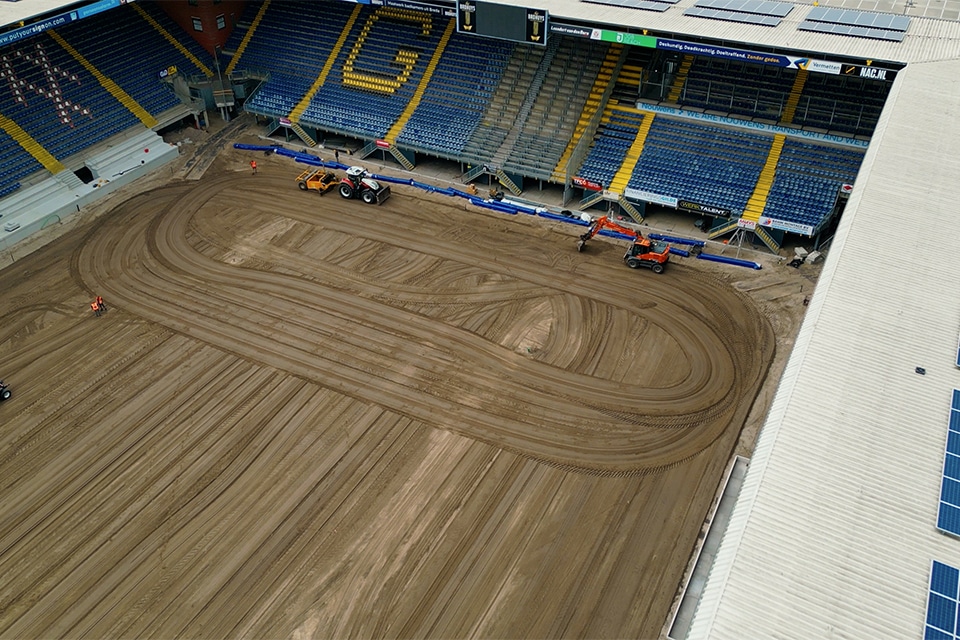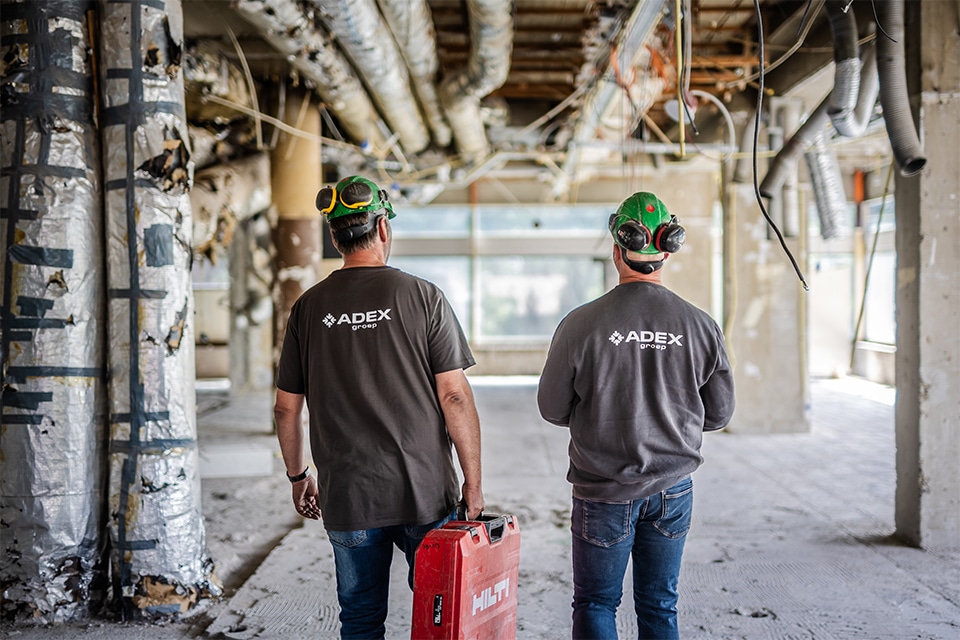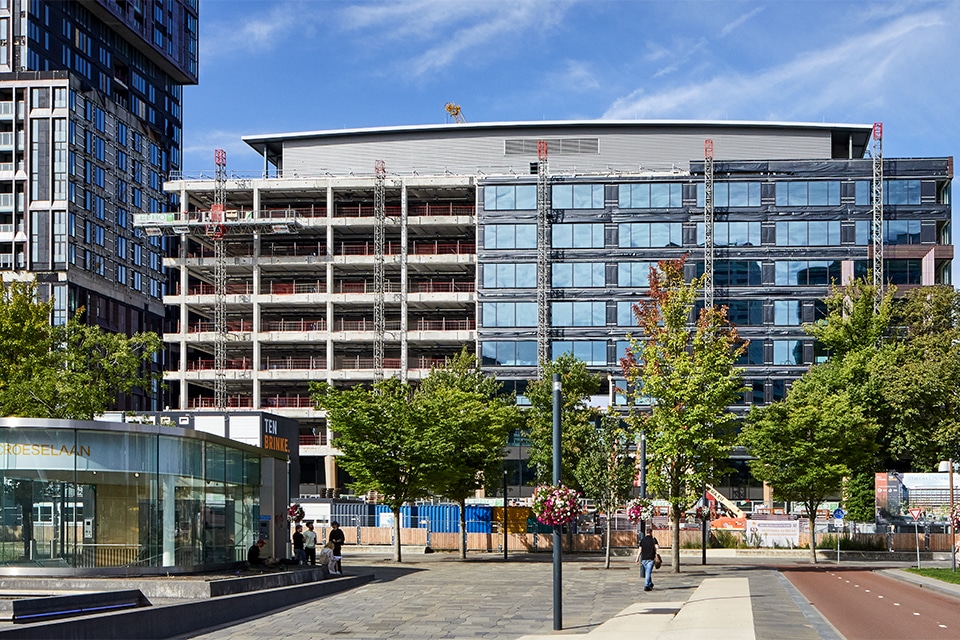
Airframe construction in 4D BIM
The shell of Kensington, because of its low repetition rate (varying residential bays and different housing types), is being poured entirely on site. With over 18,500 m³ of concrete to be processed and 36,000 m² of floor fields, it is a voluminous project. De Kock Betonbouw, with main contractor De Vries en Verburg, has a major logistical input, managing the concrete contractor until the end of next year. "We are leading the structural planning," says Martin de Kock. "From the facade closing, De Vries and Verburg takes over the logistical coordination."
The execution method of the shell design was designed in BIM/Revit, which is the standard at De Kock Betonbouw. Linkage between model and planning resulted in a secure "4D check" to reveal errors and bottlenecks in the planning. "This way we knew which temporary provisions we had to make, such as work platforms and edge tables, and could already take these into account in pricing." 4D BIM is three-dimensional design provided with the time factor. This development is increasingly common in construction processes, allowing clashes in execution planning to be better anticipated. "The structural 3D model is once again overlaid by us on top of a planning model."

Room for setbacks
Planning is dynamic, continues De Kock. "No two residential blocks are the same so cyclical work makes no sense. The pouring of the walls in relation to the crane utilization per construction flow determines the speed of the work. We limit the impact of setbacks or shifts due to wind and rain events by incorporating buffers or optimizing working methods. For example, we schedule extra space at key moments during different construction phases - in consultation with the client, of course, because you need run-out space in the construction phase. Many parties depend on our work." A feasible and reliable schedule is needed to provide planning certainty to other parties. "Producers of precast concrete are so busy that planning security becomes an issue, and we manage entirely on structural construction planning."
Daily schedules
De Kock works on daily schedules. "The construction site is tight and storage is limited. We are expected to be 3,000 crane hours short on the fixed tower cranes, solved with a mobile crane. The effects of an additional crane or work by other parties are not visible in a beam schedule. The transition from basement to superstructure therefore contains the most clashes with impact on construction speed. All logistical processes must be continuously coordinated. With daily schedules, the mutual interfaces are tangible, allowing us to focus on trust and each other's expertise; that is the success of this construction project."



